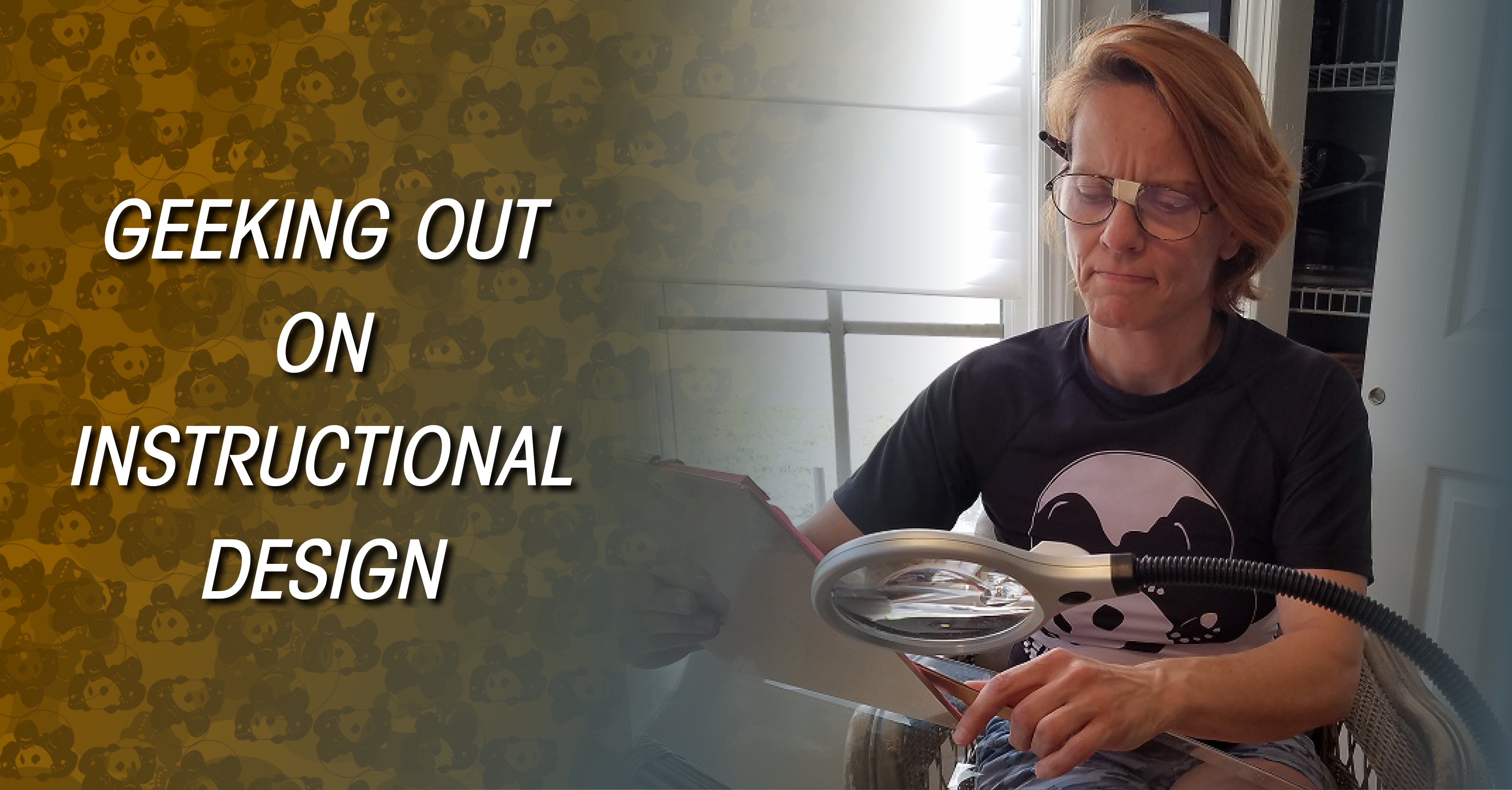
Geeking out on Teaching Jiu-Jitsu: How Instructional Design Tools Can Enhance Your Classes

One of the many hats I wear says “instructional designer” on it. Instructional design is the process of creating and coordinating all the moving parts (content, interactions, expectations, assignments, assessment) of a given learning experience (e.g., a college course, an ethics course required by all employees of a law firm) to increase the likelihood that learners will be engaged and successful. It is a long-standing field, but it has become more popular since more and more different types of institutions have moved toward putting their content online to reduce overhead and attract more geographically diverse learners. There is an art and a science to instructional design. Some of it can be tedious, but some of it is pretty cool, and all of it is intended to enhance the learning experiences and performance of the student.
I do instructional design for colleges and universities, working with faculty and administration to help them streamline their syllabi, assignments, resources, and expectations, particularly for delivery online. Since jiu jitsu is a learning experience—arguably the most profound one many people have ever experienced—and since instructional design is all about using effective tools to create effective learning experiences, I have become increasingly curious about how, if at all, other jiu-jitsu instructors and program designers use any of these tools or imagine they might be able to use them to enhance the instruction they provide for their students. So, the goal of this article is twofold: 1) to summarize some of the major elements of instructional design for instructors who are interested in learning more, and 2) to reach out to instructors who may be using elements of instructional design, or would like to, so we could share ideas and learn from each other.
Sound geeky? I resemble that remark. Maybe some of you do too.
Below are descriptions of a few components of instructional design: theory, learning outcomes, assessments, and evaluation. Keep in mind that these should be congruent with one another, which just means they should make sense when used together. For example, if one of your learning outcomes has to do with students learning to pilot an airplane, the assessment(s) chosen to determine how well students had met that outcome should somehow involve them actually flying a plane as opposed to explaining the history of flying or critiquing the business practices of a current airline.
Theory: Instructional design is influenced by theories, each of which has a different take on how learning does and should happen, and what we can predict in a given learning situation with given variables. An example of a theory related to instructional design and learning is constructivism, which states that learners do not simply absorb new information; rather, they actively construct meaning in a manner that is influenced by their prior experiences and prior knowledge. This means two learners might interpret the same information or skills differently from each other if they have different backgrounds and perspectives, and instructors must account for this potential variation regarding information and assessment delivery.
Learning Outcomes: Instructional design typically starts with an articulation of what we want learners to know and be able to do by the end of the learning experience. This may be obvious, but getting the wording right can take some work. It is not enough to say that upon completion of a biology course students will “know biology,” for example. This is vague and difficult to assess. Rather, we would want to think of five or six overall outcomes we would want to see for learners related to biology that fall under the umbrella of “know biology.” We also want to make sure we use language that lends itself to helping us create appropriate assessments to determine the extent to which students are achieving these outcomes. In other words, clear goals and clear language are very important.
Assessments: These are the activities an instructor assigns to learners to determine the extent to which those learners have achieved the learning outcomes. Common examples of assessments in formal education settings include tests, papers, and presentations. In recent years, assessments in these contexts are increasingly accompanied by scoring rubrics, which are explanations of the criteria the instructor is using to assign a given assignment a given score. Rather than trying to read the instructor’s mind, the student can refer to the scoring rubric for details about what s/he needs to include in order to earn a high mark on the assessment. Assessments should be aligned with learning outcomes and with the theory that is providing context for the learning experience.
Evaluation: Evaluation is the process by which stakeholders for a given learning experience (e.g., administrators, instructors, students, parents) determine how well the learning experience is meeting its stated goals. Whereas assessments are opportunities for students to show how well they are doing, evaluation is an opportunity for stakeholders to show how well the program is doing.
What do these concepts make you think of when it comes to teaching Brazilian Jiu-Jitsu? How could you incorporate them into your teaching, or how do you already do so? Post your experiences to comments.
Other articles:
Quick links
Contact us
About us
Quality BJJ gear at fair prices, available all year. Founded in 2012 to provide an alternative to high-cost, limited edition gis. Dive into the BJJ lifestyle with us—join the Panda Nation!"
